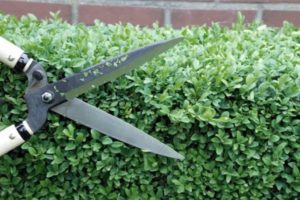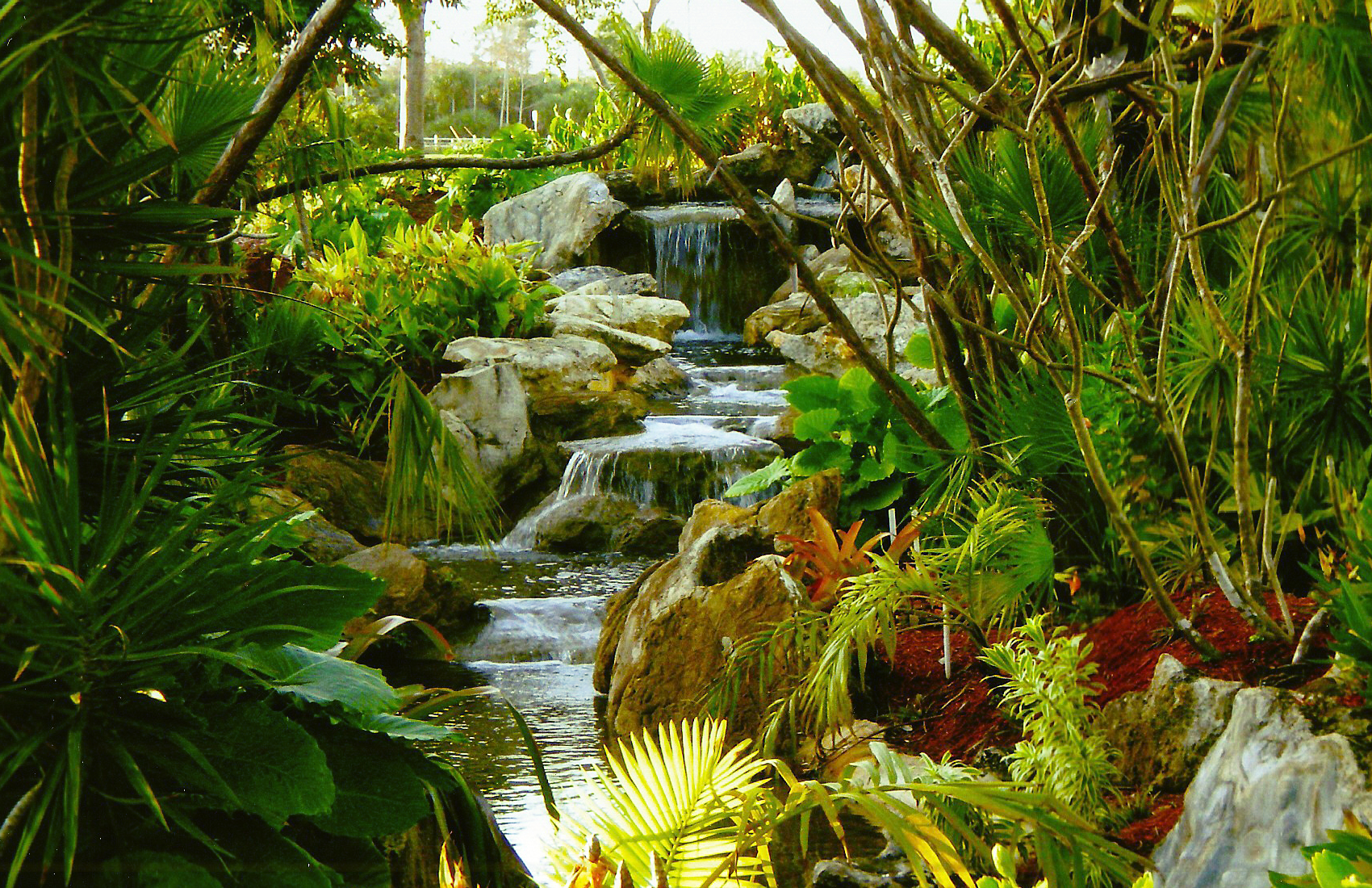Question : I am watering at about 6 pm every night for a good 45 minutes. What is causing the colors to fade? Will it come back?
Answer : When you see the leaves of a plant starting to turn from green to brown or yellow, this is the natural process of the leaf dying off and getting ready to fall.
This is what plants do as part of their regeneration. The older leaves of a plant will brown and die off eventually, as an ongoing process throughout their entire lives.
As the old leaves die off, the nutrition from the plant is diverting its energy to the growth of new leaves. Sometimes it is easy to see the new leaves coming on, sometimes with larger leaf plants, as with the Alocasia plant in the photo below, the new growth may not be immediately visible.

When browning out can be a problem is if a lot of the leaves start browning out all at once. To help clarify, if you see more than 25 to 30 percent of the leaves browning all at once, and you are a customer of ours, we hope you will send us a photo of the plant by email right away.

The time directly after installation is usually one of the most difficult times in a plants life. It requires more watering during this period. As we list in our articles during the first 2 to 3 weeks, daily for about 45 minutes to 1 hour, depending on soil conditions. After the 2 to 3 weeks after installation, starting to skip a day until the 3 month mark. Long term goal after that is watering 2 to 3 times a week for about 30 to 45 minutes per zone. This can vary depending on soil conditions and plantings and if so, should be noted at the time of installation.
This photo bellows shows some Dwarf Tibouchina that did not survive and need to be replaced. The areas where the red “X” is in the photo shows the plants that died off after installation and we need to replace. Some of the other Dwarf Tibouchina plants in this example, those with the Purple blooms, show that some are thinner and some are thicker than others. Fertilization was added to help give a boost to these, but those that are sticks in the photo, THE PLANTS WITH NO GREEN LEAVES – THOSE PLANTS ARE DEAD.

After a plant or tree makes it through the first 3 months, you’re usually in the clear. If you see a problem, significant browning of the leaves or wilting, as with the photo above, this will usually show in those first 3 months after installation.
After reading this article, and if concerned and a customer of ours, again, we ask that you send in a photo with an email and we will save the photo on file and be able to see quickly if it is nothing, something we need to keep track of, or if needing us to respond and treat the plant or tree, or perform a replacement.
What to do when you see yellowing or browning leaves, not only right after installation, but also through the longer term :
Again, for leaves to turn yellow and brown and to die off is the natural process of every plant or tree. Everything growing that lives will die off. The plant itself, for example with perennial plants, those lasting several years, many leaves will fall off and die, while many new leaves will grow during their lifetime.
With hardier perennial plantings, you should hope to get 10 to 15 years out of them, with proper care. Again, with proper care, and we detail that proper care as well with fertilizing at least 2 to 3 times a year during the first few years and trimming as needed. At least usually once or twice a year for the first few years for many varieties of plants. Some species of plants will require more trimming.
Quick note on trimming, the placement in the design has a great effect as well on how often some plants will need to be trimmed, which is also covered in some of our maintenance articles.

With many lush Tropical styled landscapes, larger leaves can be an element in the landscape as in this photo above. The most tropical looking designs will usually have some degree, even if one larger leaf plant as an accent to the look.
With the larger leaf plants as in this photo, the plants shown here are a combination of California Alacacia, Monstera Deliciousa, Ti Plants, Croton and there is a Lady palm at the far right of the photo and a Buddha Belly Bamboo tree in the backdrop representing the tallest green in the middle of the photo.
None of these should be trimmed like a hedge with hedge trimmers for a bush or a hedge.

With the large leaf plants a hand pruner works best. Take the snips and cut at the bottom of the long stalks, near the base of the ginger, Monstera & Alocasia to remove the entire stalk and leaf. These plants will have one leaf per branch from the base of the plant, so for a cleaner trim, often removing the branch from the base, not only removes the leaf to be trimmed, but also so you don’t see the stalk by itself for a more attractive look. The photo below shows how not only the leaf was trimmed but the stalk that supported the removed leaf as well. This photo is used as an example to show the stalk of an Alocasia plant, it is suggested to trim it even lower than the showing cut branch in the photo. The lower the cut, the cleaner it looks with plants like these.

For the Croton and Ti Plants as in the photo directly bellow, you usually don’t need to remove an entire stalk as they will typically have many leaves growing from a stalk.

Take the pruning shears and trim off the leaf that is browning or wishing to be removed at the base of the leaf itself, close to where it grows off the stem or branch of the larger plant.

With hedges and bushes, we suggest a larger trimming sheer or gas powered hedge trimmers.

Either of these tools are more handy for helping to shape and trim plants and bushes that have a much tighter and smaller concentration of leaves.
With these types of plants, if you see browning leaves, best to trim with a goal to shape them, either rounded on top and sides or as a boxed shape hedge, which ever style of look you prefer that suits the landscape design and purpose in your yard.
For more information on how to trim these bush & hedge varieties of plants, please feel free to view our articles dealing with trimming in more detail.
So, regarding the Original question on browning leaves, yes, absolutely can & should trim them.
That goes for any brown leaves on anything, plants, palms or trees.
Again, if you see leaves browning after a new landscape plant has been installed keep in mind the following :
- The first few months after installation are the most difficult times usually of a plant, palm and trees life.
- Browning leaves are a natural occurrence with every kind of plant, palm, tree species that lives and will happen throughout the lifetime of that material.
- If you see significant browning, 20 to 30 percent of the leaves after installation, or at any time, and your a customer of ours, please send us a photo by email so we can see and quickly help make us aware and let us know if we think it may be normal, something to keep an eye on and keep track of, something we need to respond to or possibly replace.
- Once a landscape makes it through the first few months, if there is a problem with the installation, it will most often begin to appear in a plant or tree within those first few months.
- Different tools help to do a better job at trimming different types of plants as we’ve mentioned here.
- Trimming ultimately is a vital and important part of helping a plant become healthier and fuller. Without doing so at least a few times a year, for many species, the plant will not look as full and lush as it is capable of , so trim and do so knowing that you are helping a plant to live a longer and healthier life.
For our customers, if you’re lawn maintenance company isn’t doing a good job with the trimming of your landscape or you are taking care of the yard yourself and could use some extra help, we don’t keep a regular trimming schedule, but are on request.
If you need our help, we welcome the opportunity to serve you and help keep your landscape healthy as we do provide cleanups, trimmings, maintenance for the bushes and trees, mulching, etc.
We hope some will find this article helpful in an effort to help provide you the education you may need and for us to serve you better.





